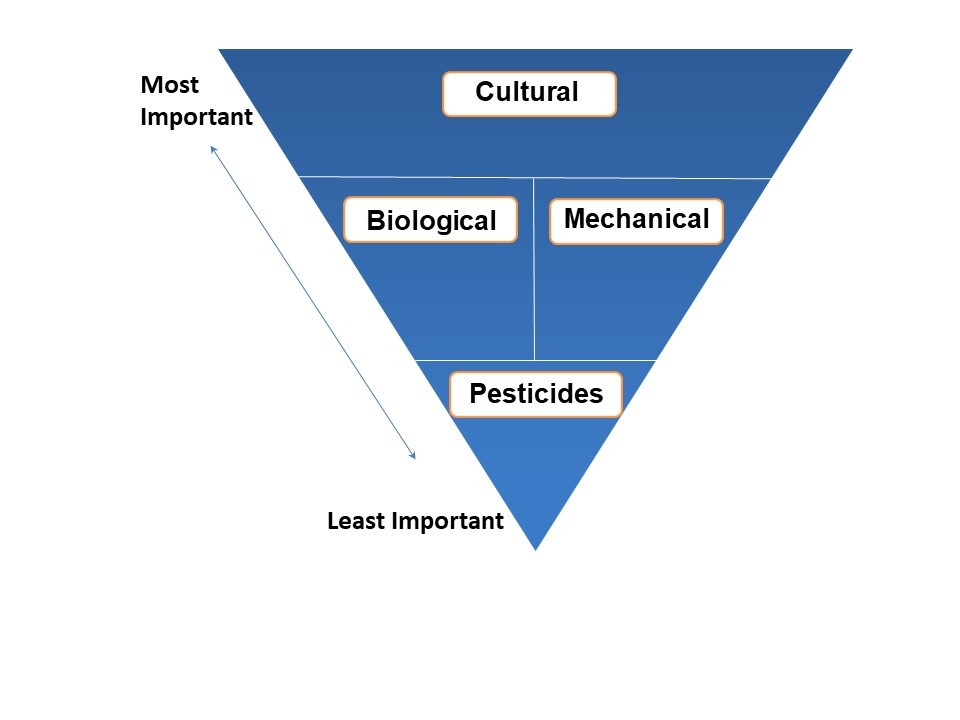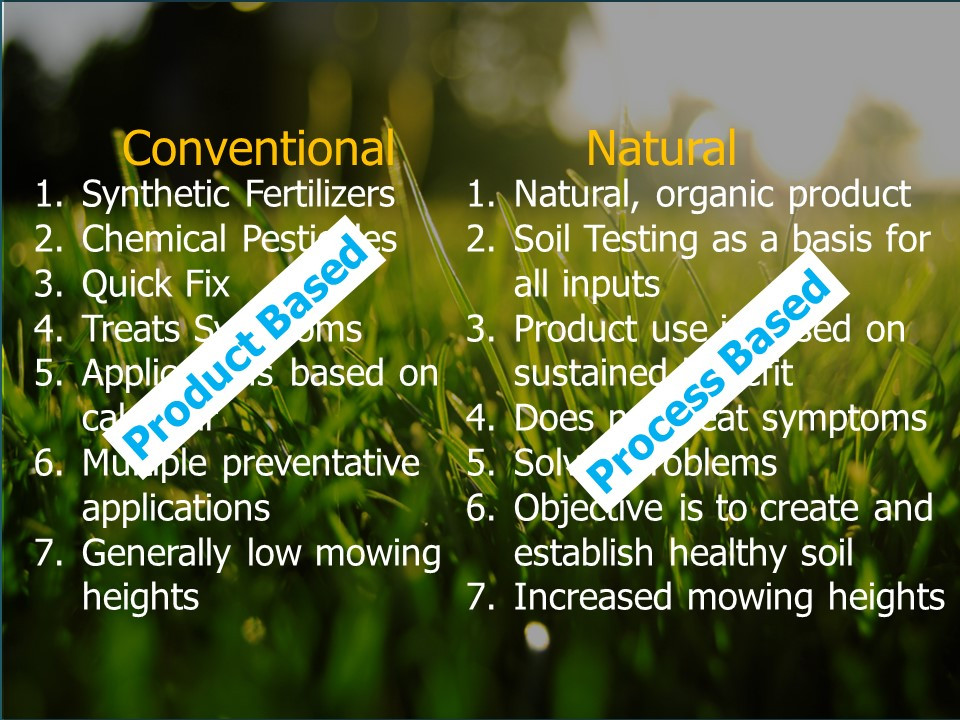Defining IPM and NLC
 Integrated Pest Management (IPM): An environmentally sensitive and cost-effective approach to weed, insect, disease and other pest management that consolidates all available necessary techniques into an integrated program to keep pest populations at acceptable levels and to avoid adverse effects.
Integrated Pest Management (IPM): An environmentally sensitive and cost-effective approach to weed, insect, disease and other pest management that consolidates all available necessary techniques into an integrated program to keep pest populations at acceptable levels and to avoid adverse effects.
 Natural Lawn Care: A systemic approach that refrains from using synthetic chemicals and focuses on building healthy soil, deep roots and strong shoots to support healthy, resilient turfgrass.
Natural Lawn Care: A systemic approach that refrains from using synthetic chemicals and focuses on building healthy soil, deep roots and strong shoots to support healthy, resilient turfgrass.
An IPM and natural lawn care program for turf management will utilize the following controls, in order of most important to least, before resorting to chemical controls:
Cultural
The management of pests and weeds by altering the environment’s natural characteristics to favor turfgrass development over its competitors; examples include improving soil health, altering soil pH, increasing mowing height and aerating.
Kristi Solberg, Assistant Superintendent of Buildings & Grounds, Park Ridge Park District- “Having healthy turf is extremely important in our line of work. Our fields get high levels of use year-round and most fields’ layouts can’t change, because we program every possible sq ft of each park. Having good soil fertility helps us continue to grow turf in those wear areas year after year for our users to have a safe and enjoyable experience.”
Plant Genetics/Turfgrass Selection
Planting and growing “the right plant in the right place”. Selecting and overseeding with sustainable turfgrass species will build a dense, deeply rooted turfgrass system that outcompetes weeds and pests for sunlight, nutrients and water.
“Weeds seed consistently every year, why aren’t we doing the same for lawns? Turfgrass quality is a numbers game. The more turfgrass you have, the more dense the lawn is and the better the lawn looks.” -- Dr. Lee Miller, Associate Professor, University of Missouri
Mechanical/physical
Using physical barriers, traps, hand-picking and other methods that disrupt the life cycle of pests and weeds.
“During the month of May is when you’re going to see the most dandelions. The key is to keep up with the mowing and then once you get past May into June, it’s not an issue anymore.” -- Ken Wexler, Park Planner, Glenview Park District
Biological
The management of pests by using helpful plants, insects and animals.
“In 2018, we used environmentally friendly beneficial nematodes to control for grubs. We had no grub activity in 2019.” -- Carl Gorra, Parks Operations Manager, Naperville Park District
Chemical
Considered a last resort in IPM, the use of synthetic pesticides to manage pests and weeds.


